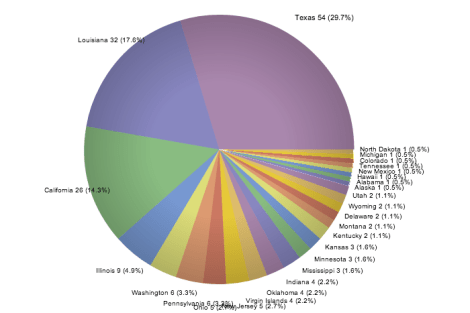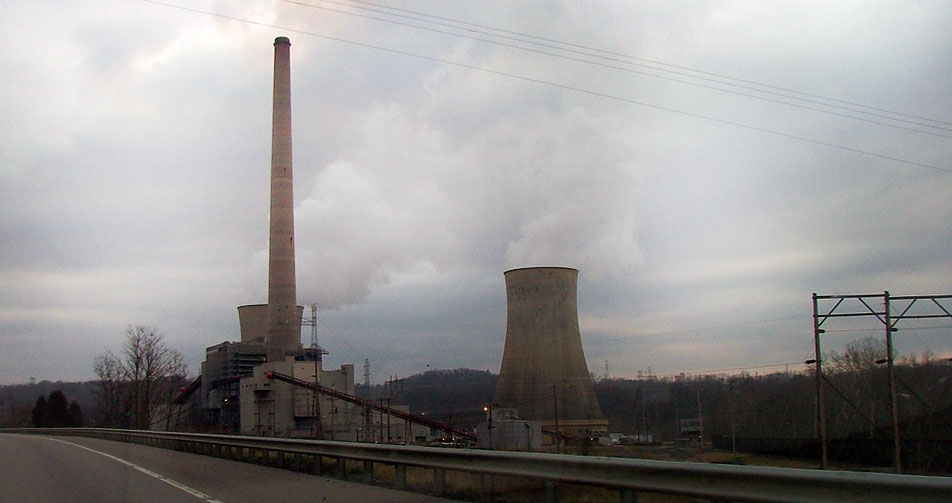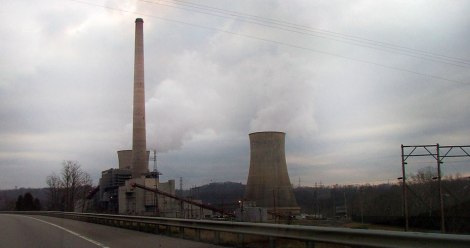In 2011, American industry produced the equivalent of 3.3 billion tons of CO2 emissions — 10.5 tons for every resident of these United States. Two-thirds of those emissions were from power plants, by which we of course mean fossil fuel power plants.
That’s the topline summary of the EPA’s new report on greenhouse gas (GHG) emissions — the second time the agency has completed such a survey. The good news is that the GHG emission number from power plants is going down. From The Hill:
In all, 8,000 facilities across nine industry sectors put 3.3 billion tons of carbon dioxide equivalent emissions into the air in 2011. Power plants accounted for about 2.2 billion of those tons.
EPA said that was a 4.6 percent decrease from power plants compared with 2010, which it attributed to growing reliance on natural gas and renewable energy for electricity generation.
Those emissions could drop even more in the future, as low natural gas prices, expanded renewable electricity generation and an abnormally warm winter last year curbed coal-fired generation. …
EPA released its first report from the program last year, when it considered 2010 emissions from 29 sources. Emissions from those sources fell 3 percent in 2011.
Petroleum and natural gas systems were the second greatest emitters, clocking in at 225 million tons of carbon dioxide equivalent emissions. Refineries ranked third, at 182 million tons.
What’s really cool is the EPA’s interactive map, which lets you zoom in to regions and see what polluters are in any given neighborhood. You can also see where certain types of polluters are more common. Here is pollution from refineries, by state:

EPAClick to embiggen.
But what the EPA’s map doesn’t show well is where the most pollution occurs. So we made a map that does.
Here’s how our map works: The 250 largest producers of GHG pollution are shown. The larger the orange circle, the more the facility pollutes. The icon over each location is actually a graph; dark orange represents the amount of pollution that is carbon dioxide, lighter orange is methane. Click on an icon and you can see the name, type of facility (see key below), and amount of emissions.
[protected-iframe id=”fac1f205fe9fd0a1fcc3770e0d82c5d3-5104299-34907067″ info=”https://maps.googleapis.com/maps/api/js?v=3.exp&sensor=true” width=”470″ height=”360″]
You won’t be surprised to see that many of the top polluters are in Texas and the old Rust Belt. This is in part because older power production facilities are still grandfathered in under pre-Clean Air Act pollution standards — one of the main gaps in attempts to curb emissions.
What does all of this tell us? Not much that we didn’t know. Power plants create a lot of carbon dioxide pollution. The U.S. creates a lot of greenhouse gases — in 2011, 0.5 percent of the total amount we can still create before tipping into climate catastrophe.
But at least now we know who’s doing it.
—–
Key to types of facility:
- C: Stationary Combustion
- D: Electricity Generation
- E: Adipic Acid Production
- F: Aluminum Production
- G: Ammonia Manufacturing
- H: Cement Production
- I: Electronics Manufacture
- K: Ferroalloy Production
- L: Fluorinated GHG Production
- N: Glass Production
- O: HCFC–22 Production and HFC–23 Destruction
- P: Hydrogen Production
- Q: Iron and Steel Production
- R: Lead Production
- S: Lime Production
- T: Magnesium Production
- U: Miscellaneous Use of Carbonates
- V: Nitric Acid Production
- W: Petroleum and Natural Gas Systems
- X: Petrochemical Production
- Y: Petroleum Refining
- Z: Phosphoric Acid Production
- AA: Pulp and Paper Manufacturing
- BB: Silicon Carbide Production
- CC: Soda Ash Manufacturing
- DD: SF6 from Electrical Equipment
- EE: Titanium Dioxide Production
- FF: Underground Coal Mines
- GG: Zinc Production
- HH: Municipal Landfills
- II: Industrial Wastewater Treatment
- SS: Manufacture of Electric Transmission and Distribution Equipment
- TT: Industrial Waste Landfills




